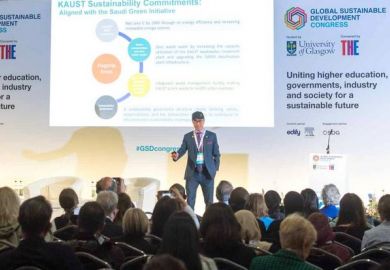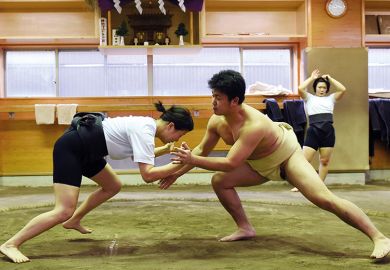Australian neuroscientists have produced a metrics-powered directory of female conference speakers in a bid to overcome the inbuilt gender bias of organisers’ personal networks.
Researchers from Murdoch University and the University of Tasmania compiled the list of potential speakers from female authors of highly cited articles in the top 10 neuroscience journals.
They say that their approach could be adopted to ensure more equitable conference line-ups, with women comprising just 27 per cent of speakers at the past 400 or so neuroscience conferences.
The approach, outlined in the journal Plos One, could also be applied to conferences in other gender-skewed disciplines – from ecology and microbiology to geophysics, mathematics and exercise medicine – and to ensure equitable representation of other minority groups.
Lead author Ann-Maree Vallence said that invited speakers were typically selected by organising committee members who sat around “brainstorming ideas in real time” and targeting researchers they knew or whose work they had read. She said that only 20 to 30 per cent of authors of journal articles in neuroscience and most other biological sciences were women.
“There are some systemic issues contributing to that base rate,” said Dr Vallence, co-leader of Murdoch’s Action and Cognition Research Group. “If we can identify sufficient numbers of women, we could have a balanced conference programme.”
Reasoning that speakers could be selected using the metrics-based methods used to award promotions and grants, the team analysed articles published in top neuroscience journals between 2012 and 2016. It focused on some 6,000 papers whose citation rates exceeded the journal averages, and attempted to determine the gender of the 12,000-odd first and last authors.
Zeroing in on the 100 most-cited papers, the team compiled lists of 100 first and 100 last authors and ranked them according to field-weighted citation impact (FWCI) measures reported in the SciVal bibliometrics database.
While just 32 per cent of the first authors and 21 per cent of the last authors turned out to be women, there was no difference between men’s and women’s FWCIs in either group. This suggested that while neuroscience publications were dominated by males, women’s and men’s research was of equal quality.
Dr Vallence said that the generation of speaker lists could be automated. “Our approach is simple, and from our perspective that’s the beauty of it,” she said. “I have in mind some app or online [tool] where it might take a few minutes to pop in some keywords and generate a list.”
She said that while many academic societies had policies to achieve gender equity among conference speakers, none explained how to identify top female speakers.
She said the only arduous aspect of the research had been identifying authors’ genders – a problem that could be overcome if big publishers requested gender information once they had decided to publish articles, and made that data available on request.
“It would totally eliminate our need to go through this time-consuming process of identifying gender based on a name or a Google search,” she said. “When you publish an article, you go through about a million check boxes – adding one more should be very simple [for the publishers].”
Dr Vallence stressed that providing such information should be optional, and journals should not request it at the paper submission stage. “There’s a large body of evidence that gender can influence the review process,” she noted.




